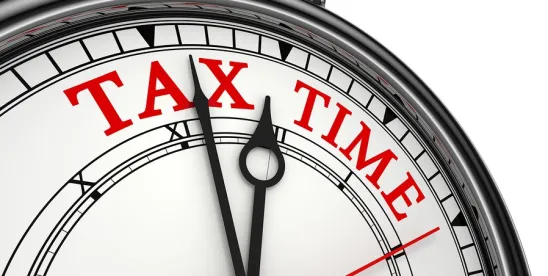On 3 July 2025, the House passed the Senate’s version of H.R. 1, the budget reconciliation bill known as the “One Big Beautiful Bill Act” (the Act). President Trump signed the Act into law on 4 July 2025. The legislation changed significantly over several iterations from its initial House committee-passed version through the final Senate amendment. Such changes were necessary to generate support, as Republican leaders navigated narrow margins in both chambers and responded to a shifting international tax policy environment.
The Act includes extensions of current tax provisions and makes many significant tax changes. This alert describes one provision of the Act that has been of great interest to the startup ecosystem relating to Qualified Small Business Stock (QSBS). Please see our alert found here if you are interested in learning information on other material changes included in the Act.
QSBS Background
Over the past several decades, Congress has sought to incentivize investment in small and early stage businesses by allowing taxpayers to exclude from taxation a portion of gains realized in certain small business stock sales. This provision is embodied in Section 1202 of the Internal Revenue Code (along with the related Section 1045). Gradually, Congress increased the percentage of capital gains in QSBS excluded from tax from 50% to 75% and then to 100%, but initially these changes were passed with sunset provisions that required congressional reauthorization. On 18 December 2015, Congress passed the Protecting Americans from Tax Hikes Act, which included a permanent extension of Section 1202 that allowed taxpayer gains on qualifying small business stock obtained after 27 September 2010 to qualify for 100% exclusion.
Summary of Changes
The Act made certain key changes to the Section 1202 requirements that will allow for expanded opportunities to take advantage of the incentive.
For QSBS issued on or after 5 July 2025,1 the Act provides that:
- The gross asset value cap for QSBS issuers increases from US$50 million to US$75 million (subject to an inflation adjustment beginning in 2027);
- The formula for the per-issuer cap on the QSBS exclusion is amended by increasing the dollar-based limit on excluded gain from US$10 million to US$15 million (also adjusted for inflation beginning in 2027); and
- The holding period required to qualify for any QSBS benefits is shortened, providing a 50% exclusion for gain recognized if the QSBS is held for three years and a 75% exclusion for gain recognized if the QSBS is held for four years.
Gain recognized on QSBS held for five years is eligible for a 100% exclusion, similar to the pre-Act approach for QSBS issued after 27 September 2010.
What Gains Are Excluded?
100% of gains recognized on the sale of stock issued by a “qualified small business corporation” (QSBC) on or after 5 July 2025, and held for more than five years prior to sale, up to US$15 million (or, if greater, 10 times the amount of the taxpayer’s investment in the stock), can be excluded under Section 1202. Prior to the Act, the taxpayer must have held the stock for more than five years prior to sale to be eligible for any gain exclusion. Under the Act, there is now a phase in allowing for partial gain exclusion starting at three years (allowing 50% gain exclusion) and four years (allowing 75% gain exclusion). The exclusion applies not only to federal income taxes, including the alternative minimum tax, but taxpayers may also be able to exclude gains from state income taxes (depending on state law).
Eligibility Requirements
Below is a high-level summary of the Section 1202 eligibility requirements.
A QSBC Must Issue the Stock
A QSBC is an entity classified as a C corporation that engages in a qualifying active business, excluding any trade or business involving services in health, law, engineering, architecture, accounting, actuarial science, performing arts, consulting, athletics, financial services, brokerage services, or any trade or business where the principal asset is the reputation or skill of one or more employees. To be clear, partnerships, limited liability companies that have not elected to be taxed as corporations and S corporations do not qualify. Additionally, banking, investing, insurance, financing, leasing, and other similar businesses are excluded, along with farming businesses, and any business operating a hotel, restaurant, or similar business. The Act did not make any changes to these requirements.
Size Limitation of the QSBC
At all times between 10 August 1993, and the date the QSBC issues the stock to a qualified stockholder (including the amount invested in connection with the qualified stockholder’s purchase), the value of the corporation’s aggregate gross assets must not exceed US$75 million (an increase from US$50 million under the prior rules).
Taxpayer Eligibility
The taxpayer must be an individual, estate, or trust, and must have purchased the stock in exchange for cash, property, or services on or after 5 July 2025, directly from the QSBC and not from another stockholder.
Exclusion Applies Only to Appreciation in Stock Value
The exclusion does not apply to so-called “built-in gain.” Accordingly, if the taxpayer transfers property other than cash to a QSBC in exchange for stock issued by the QSBC, the exclusion does not apply to the appreciation on that property prior to the transfer of the property to the QSBC. However, if the contribution is not taxed because of Section 351, the tax on the appreciation will not be assessed until the QSBC stock is sold.
Holding Period
The taxpayer must now hold the shares for at least three years before the sale to begin to take advantage of the gain exclusion. However, subject to certain restrictions, a stockholder may sell stock prior to the three (or five) year period and not recognize gains from the sale provided that the stockholder uses the proceeds to acquire newly issued QSBC stock (a Section 1045 Rollover). When QSBC stock is sold and reinvested in a Section 1045 Rollover transaction, the holding period of the old shares is credited to the holding period of the new shares.
Planning Considerations
Section 1202 provides investors opportunities to capture greater gains in their investment portfolios through the exclusion of qualifying gains from income taxes. Accordingly, investors and businesses alike may wish to consider some of the following when planning to invest or create a start-up.
Formation and Funding of Start-Up Companies
Those organizing a start-up, early stage company that will otherwise meet the eligibility requirements for a QSBC should consider organizing as a C corporation instead of an S corporation, partnership, or limited liability company taxed as a partnership. The potential for gain exclusion under Section 1202 is one of various tax factors that should be considered in determining the form and tax characterization of a start-up entity.
Shorter-Term Investments
In some situations where the holding period is not met, taxpayers may be able to convert their shares without losing the benefits of Section 1202’s 100% exclusion by reinvesting in a Section 1045 Rollover transaction.
Sales of Operating Divisions and Assets
Businesses interested in selling a division or other assets that on their own would constitute a qualified trade or business should consider marketing the tax benefits of the 100% exclusion to potential buyers who are eligible taxpayers.
Conversion of Pass-Through Entities
Existing pass-through tax entities (i.e., S corporations, limited liability companies, and partnerships) may consider reorganizing as a QSBC to allow their eligible owners to obtain the benefit of the 100% exclusion for shares issued after the reorganization or restructuring. This type of conversion may allow for the exclusion of gains on future appreciation in the value of those businesses after the date of the reorganization (but not built-in gain). Importantly, a converted entity must meet the size limitation on the date of conversion not the date of creation.
Estate Planning Opportunities
The QSBS exemption can be incorporated into an estate plan and allow for the transfer of appreciated QSBS eligible stock to be passed on to heirs who can also take advantage of the gain exclusion. In some circumstances, taxpayers may be able to effectively increase the US$10 million or US$15 million gain limitation via transfers to estate planning vehicles.
Practical Considerations
It is important to note that taxpayers claiming the exclusion must be able to substantiate that the eligibility requirements are met, including the corporation’s gross asset value at the time of issuance. Accordingly, investors should ensure they receive appropriate representations from the issuer at the time of investment and have contractual rights to obtain substantiating information from the companies at the time of exit. We advise clients on the appropriate representations and covenants investors should seek when investing in potential QSBCs.
Conclusions
While the benefits and costs of the provision can be debated, the provision provides a clear incentive to invest in early stage companies. The tiered gain exclusion allows investors to access tax benefits sooner, potentially increasing the appeal of QSBS investments, and allows for investors (particularly angel investors) to recycle investment capital–further benefitting the startup ecosystem. The higher asset threshold and per-issuer cap make QSBS more attractive to a wider range of startups and investors, particularly in capital-intensive industries.
The recent expansion of the QSBS incentive provides tax-planning opportunities for start-ups, investors in early stage ventures, and small and middle-market businesses. If you are interested in exploring the possibilities presented by the QSBS legislation, we urge you to contact a member of the firm's tax or emerging growth and venture capital groups.
Footnotes
1 QSBS issued before 5 July 2025, will remain subject to the prior Section 1202 provisions, including the minimum five-year holding period and limit of US$10 million of gain exclusion (or 10X investment amount).







 />i
/>i
